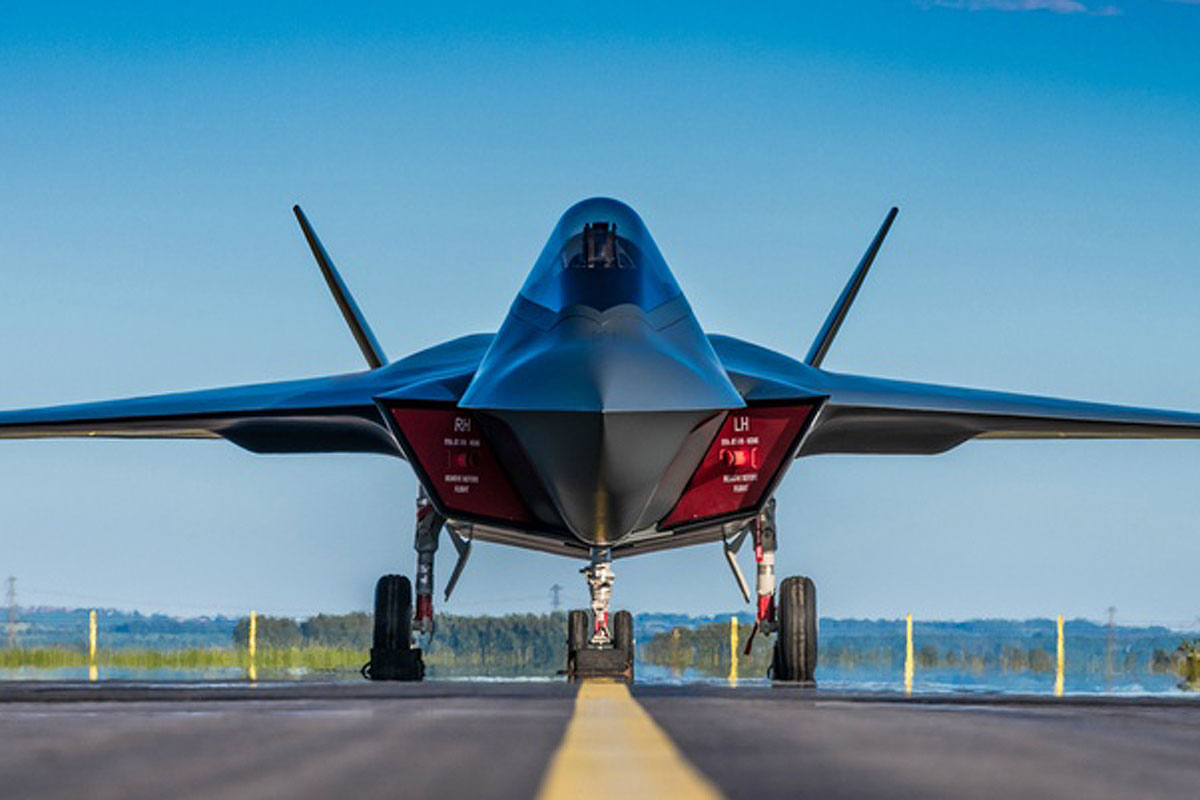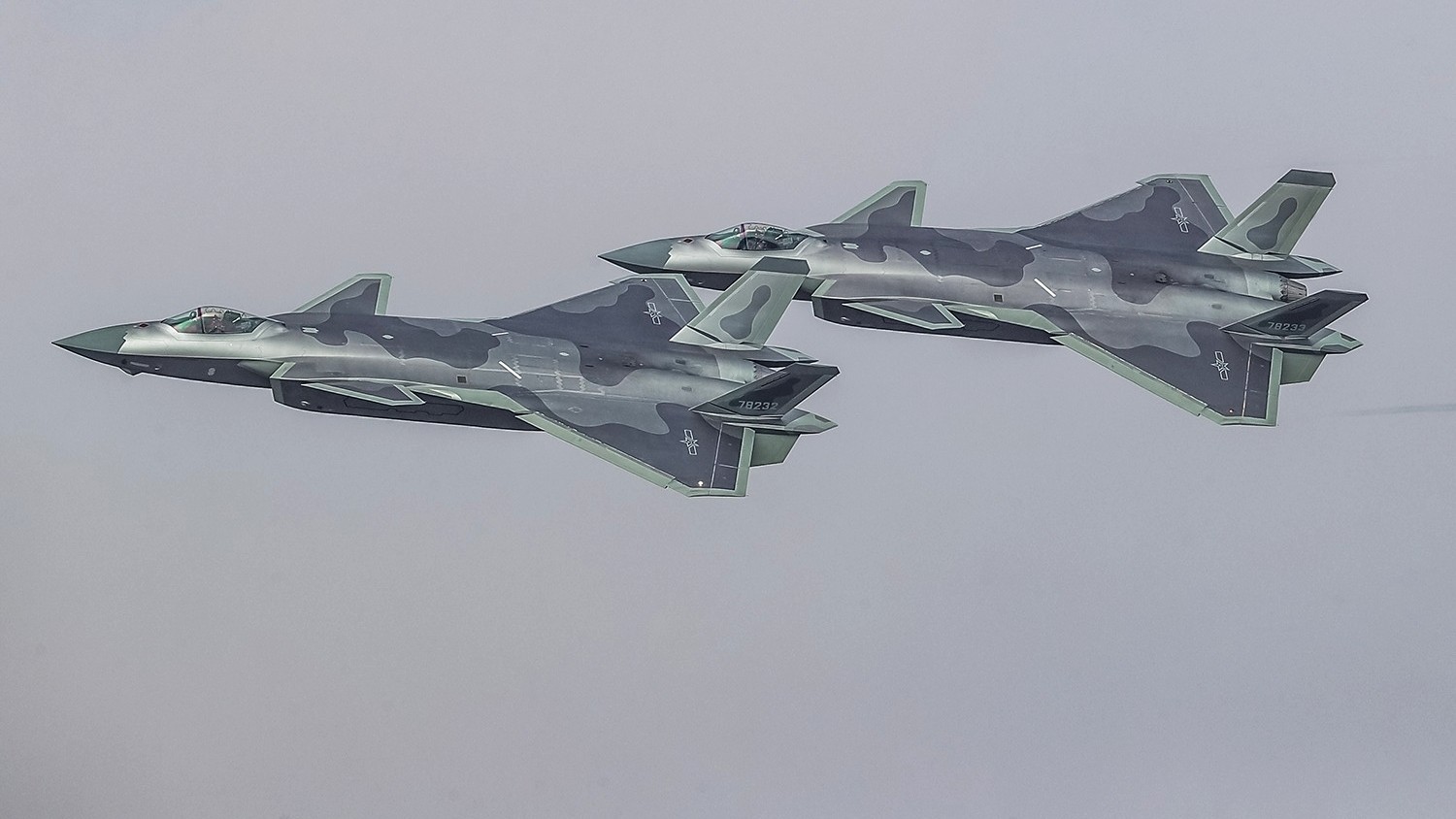
too much fantasy by your part.
F-35 is powered by f135 engine of 19 tonnes, it needs only a single engine contrary to J-31 that needs two to get similar thrust.
J-20 is not powered at this moment by WS-15, it is powered by Al-31 or WS-10, and your fantasy is to believe J-20 will be faster than F-35, the F-35 does not fly faster because contrary to Chinese propaganda the americans are not boasting but telling the truth, F-35 only achieves Mach 1.6 because that is the limit of DSI intakes, at such speeds they get close to 94% pressure recovery, thus the engine receives the correct mass flow without boundary layer distortion or supersonic flow.
Thus the americans are saying F-35 is a Mach 1.6 fighter.
J-31 has very weak engines and they occupy a lot of space thus you have an aircraft that is stealth just in name, in order for J-31 to carry a decent payload and enough fuel it needs external weapons hardpoints, basically making it an aircraft with low thrust to weight ratio, small wings and without stealth easy pray for aircraft like Rafale.
J-20 has enough space for fuel but still has weak engines and the intake is fixed, thus a Mach 1.6 also is the best speed it will reach without affecting the engines.
Mach 2 is possible but acceleration will be reduced, so compared to Su-57 can not compete you like it or not, at Mach 2 plus the supersonic flow ingestion by the engine is a very big risk and the engines can suffer damages.
So you like it or not, the best performance is not that of J-20, but the one of Su-57.
And even F-22 can not have the best one, since its intakes are fixed, J-20 will operate at speeds of Mach 1.6 or Mach 1.4 and while WS-15 might allow it supercruise, its intake capture area is huge, at high speeds the aircraft will ingest excessive mass flow, basically increasing the weight by the need of bleeding systems and the need to reduce the intake throat.
Conclusion DSI only works well at Mach 1.6, J-20 is a big F-35 despite in your fantasy is a MiG-31 with Su-35 agility and weight of F-16
Su57...
From the perspective of the Russian Air Force, its dissatisfaction with the Su-57 fighter has a long history. On the one hand, the Russian Air Force believes that compared with the US F-22 and the Chinese J-20, the performance gap of the Su-57 is obvious, especially in stealth performance. For example, the stealth performance of the Su-57 intake port design is not good enough, it is still relatively straight, instead of the S-shaped intake port like the F-22 and J-20. Although Sukhoi designers installed radar wave shields in the front section of the Su-57's air intake, the effect did not seem obvious. In addition, many details of the Su-57 fighter design are insufficient for stealth performance considerations. The Russian Air Force has strong anti-stealth capabilities and advanced radar equipment, so it is disappointed with the actual test results of the Su-57.
On the other hand, the Russian Air Force is also very opinionated about the high cost of the Su-57 fighter. To this end, it has repeatedly delayed the batch equipment schedule of the aircraft and intentionally reduced the number of equipment. Previously, the Russian Ministry of Defense estimated that the cost of the Su-57 fighter was about 75 million US dollars. At present, the final price should not be less than 100 million US dollars. This price does not seem to be expensive on the stealth warframe of the United States, but it is indeed a sky-high price for the current Russian Air Force.
In addition, from a technical point of view, there are still many thresholds for the current Su-57 fighter to cross. The first threshold is the problem of the engine. The current 117S engine of the Su-57 fighter is not considered to be able to meet the requirements of future combat service. Therefore, the prototype of the subsequent test flight began to be replaced with a new-generation engine code-named "Product" -30. The test flight and testing between the new engine and the Su-57 fighter aircraft will take some time. Its structural layout design and thrust characteristics are significantly different from those of the 117S. The ensuing work is likely to carry out a certain design of the fighter aircraft. Adjustments, including hardware and software aspects. This process can take a lot of time.
In addition, the Su-57 fighter's built-in belly capsule has proved its design feasibility through video, but the inherent defects are difficult to overcome. Because the bomb bays are arranged in two independent series, the complexity is higher than that of a single large bomb bay. Moreover, the split layout sandwiched between the intake ducts is not good enough for the utilization of the internal space. For example, a built-in bomb bay of a Su-57 fighter can only mount one Kh-59MK2, and the combat efficiency of a single launch is very poor. In contrast, the built-in bomb bays on both sides of the F-35 can carry two JSM cruise missiles and two AIM-120 air-to-air missiles at the same time.
In addition, in terms of supporting weapons for stealth fighters such as the Su-57, Russian military enterprises are not prepared enough. Especially for small precision guided bombs with long range and high accuracy similar to the size and weight of the US SDB, Russia is almost blank. In fact, from the actual combat experience of the current F-22 fighters, small precision guided bombs such as SDB are the most suitable land attack weapons. F-22 fighters can mount 8 SDB-guided bombs and 2 AIM-120, AIM-9 air-to-air missiles on both sides and in the belly bomb bay. It can not only hit 8 different ground targets, but also has a strong air combat. ability. The Kh-59MK2, a long-range air-launched cruise missile with a range of up to 550 kilometers, is actually launched by the Su-30SM multipurpose fighter and Su-34 tactical bomber.









































